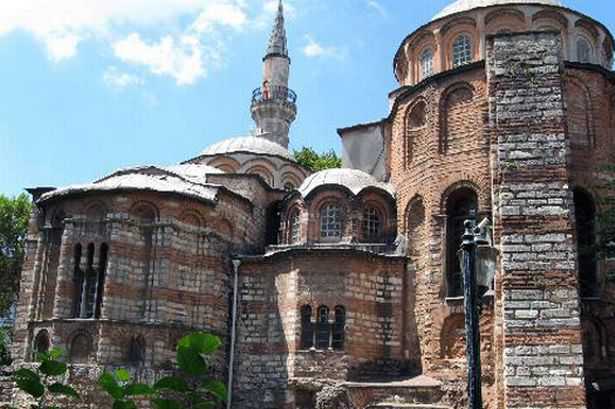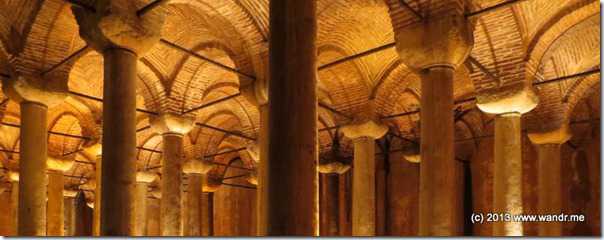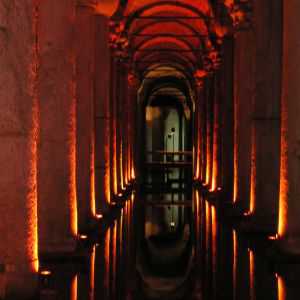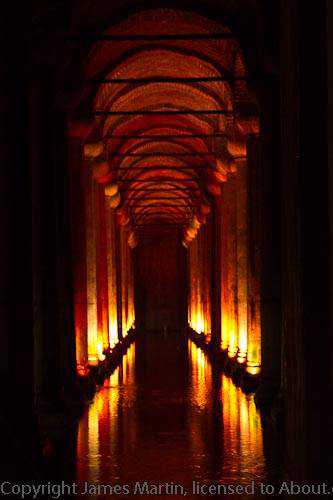Destination: East meets west in the Turkish city of Istanbul
27 Feb 2013 09:05
From Birmingham Airport it will take 3 hours 50mins and 2.657km to reach Ataturk Airport in Istanbul.
Share on print Share on email
The Blue Mosque, Sultanahmet, in the heart of Istanbul’s old city
It is the city where two continents collide, their cultures and heritage blending in a unique atmosphere.
Europe and Asia meet in Istanbul, and throughout this vibrant city you’ll find centuries-old mosques, churches and markets happily rubbing shoulders with modern restaurants, galleries and nightclubs.
The cost of an overnight stay varies from £10 to £1,000 depending on your taste because Istanbul is also a city of contrasts. Whatever you do, plan on visiting a hamman – the traditional Turkish bath that the UK’s stylish spas try, but fail, to replicate. For about £12 your skin will be scrubbed clean, a fraction of the cost you’d pay back home.
Kariye Museum

Must Sees
1. Kariye Museum (The Chora Church), Kariye Cami Sokak, Edirnekapi
This 11th century church looks unassuming from the outside, but step through the door and prepare to be amazed by remarkable mosaics illustrating scenes from the life of Christ and the Virgin Mary.
Over the years, it has doubled as a museum and it remains a Byzantine treasure to this day.
Take the tram to Topkapi and walk along the old city wall to make this a complete holiday experience.
Bosphorus Strait, Old City, Sirkeci
2. Bosphorus Strait, Old City, Sirkeci
Crossing the Bosphorus Strait is one of those holiday musts seasoned travellers like to tick off.
To start with, you’ll find yourself between two continents while in the same city.
Taking the boat, you’ll marvel at Istanbul’s iconic landmarks, many of which can only be enjoyed from close this way.
The infinite blue and the company of seagulls all the way will make you wish this journey will never end.
Basilica Cistern, Imran Oktem Cad, Sultanahmet
3. Basilica Cistern, Imran Oktem Cad, Sultanahmet
Yes, it’s even worth a look at the plumbing! The Basilica Cistern (or Sunken Palace from the original Turkish) is a mysterious underground complex lit by candlelight.
It is, in fact, a Roman building dating back to 532 AD.
This beautiful, cathedral-like cavern of columns and arches reflected in the still water is quite unlike anywhere else.
Ancient and quiet, it’s thought-provoking, too, a world away from the bustle overhead.
Fact File
Language: Turkish
Currency: Turkish Lira
Time Zone: GMT + 2
Flights: Turkish Airlines fly direct from Birmingham. KLM, Air France and Lufthansa are among others offering one-stop flights.
Best Months: Sun in the summer, snow in the winter, but the humidity is constant in sea-encircled Istanbul. Festival-filled spring and autumn are popular, but winter is picturesque and the trade-off for summer’s humid heat are languid evenings by the Bosphorus.
Visas Etc: You need a Tourist Visa sticker which can be issued at the point of entry for £10
Hotels
Posh
Baran Residence Hotel Airport, Naci Kasim Cad. Bahcelievler
Okay, so you’re happy to break the bank. Expect to pay in excess of £1,700 a night for a spacious, air-conditioned apartment in the Baran Residence just three kilometres from the Atatürk International Airport. Apartments feature modern furnishings and balconies with city views. They have satellite TV and a washing machine. The kitchens include a refrigerator, microwave and dishwasher. You get buffet breakfast, too.
Budget
Cem Sultan Hotel, Kutlugun Sokak 28, Sultanahmet
Right at the other end of the spectrum, this bargain basement hotel is friendly and welcoming even if the double rooms are a little cramped, and some don’t have windows! Still, it’s clean, relatively comfortable and breakfast is in a room which offers a view across the Bosphorus. Fine for a couple of nights, expect to pay around £22 a head – or less than a tenner a night if you’re prepared to share with strangers in an eight-person dorm.
Eating Out
Imbat Restaurant, Hocapasa Mh. Hudavendigar Caddesi, Sirkeci
The food here is good, but the view from the restaurant is unrivalled, hence its recent Travellers’ Choice 2012 Winner at Tripadvisor. The emphasis in on Aegean and Mediterranean cuisine, with a menu that is surprisingly affordable. From your table you can gaze out over the Bosphorus, taking in sights such as Bosphorus Bridge, Galata Tower and Topkapi Palace. Exciting by day, enchanting by night, booking is essential.
via Destination: East meets west in the Turkish city of Istanbul – Birmingham Mail.




